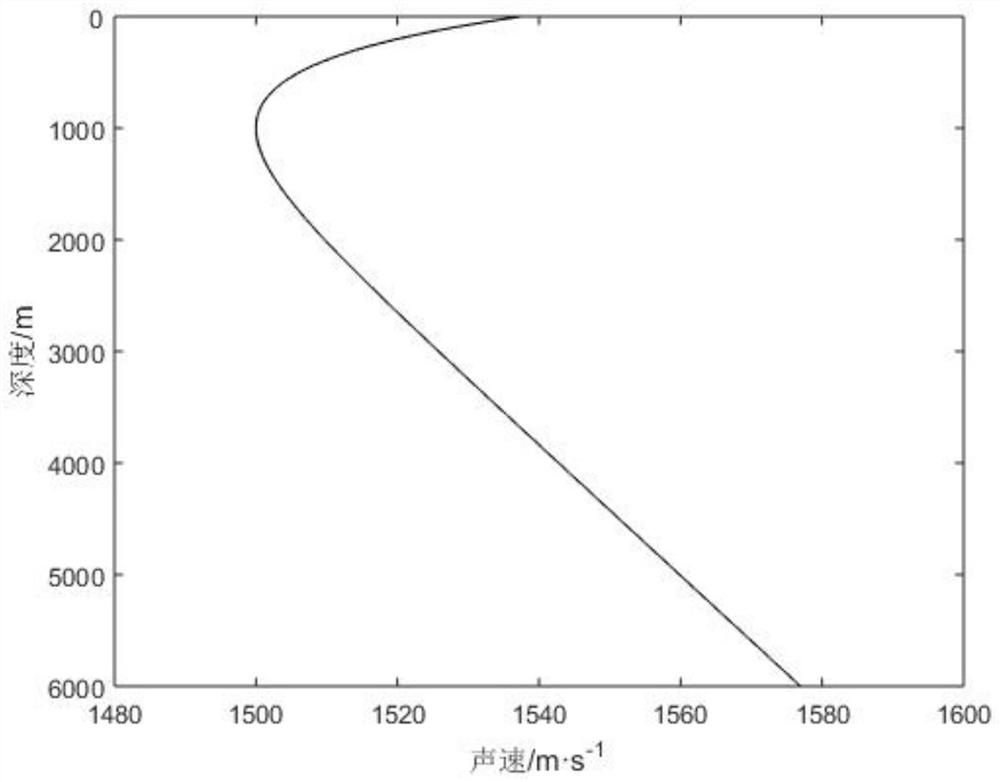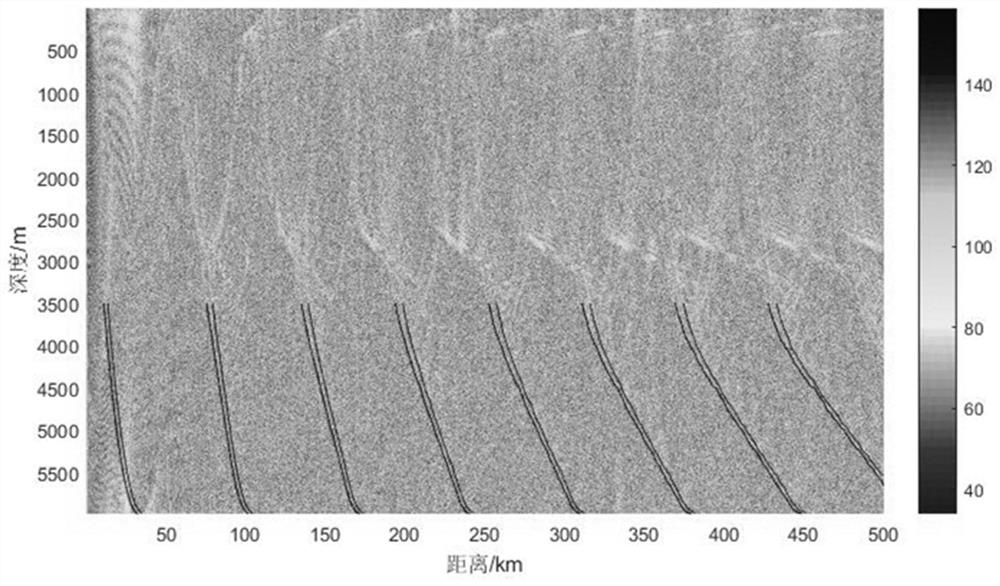Gain Calculation Method of Caustics Convergence Region in Deep Sea Complete Sound Channel Based on Parabolic Equation Theory
A parabolic equation and caustics technology, applied in the processing of the detected response signal, the use of sonic/ultrasonic/infrasonic waves to analyze fluids, and the use of sonic/ultrasonic/infrasonic waves for material analysis, etc.
- Summary
- Abstract
- Description
- Claims
- Application Information
AI Technical Summary
Problems solved by technology
Method used
Image
Examples
Embodiment
[0065] The Munk profile, a typical sound velocity profile in the deep sea, is analyzed, and the sound velocity expression of the Munk profile is:
[0066] c(z)=c 0 {1+ε[e -η -(1-η)]} (1)
[0067] Among them, η=2(z-z 0 ) / B,z 0 is the depth of the channel axis, B is the waveguide width, c 0 is the minimum value of sound velocity, and ε is the magnitude of deviation from the minimum value. For a typical Munk model, the parameters are: B=1000m, z 0 = 1000m, c 0 =1500m / s, ε=0.57×10 -2 . The sound velocity profile is as figure 1 shown.
[0068] The depth of the sound source is 300m, and the environment with a sea depth of 6000m is selected for simulation. The signal is filtered with a one-third octave band of the center frequency of 200Hz. Using RAM parabolic equation sound field calculation software, the frequency range is 178-224Hz, with a step of 1Hz Long, the sound field is calculated at each frequency point, and then the frequency average sound intensity is calculate...
PUM
 Login to View More
Login to View More Abstract
Description
Claims
Application Information
 Login to View More
Login to View More - R&D
- Intellectual Property
- Life Sciences
- Materials
- Tech Scout
- Unparalleled Data Quality
- Higher Quality Content
- 60% Fewer Hallucinations
Browse by: Latest US Patents, China's latest patents, Technical Efficacy Thesaurus, Application Domain, Technology Topic, Popular Technical Reports.
© 2025 PatSnap. All rights reserved.Legal|Privacy policy|Modern Slavery Act Transparency Statement|Sitemap|About US| Contact US: help@patsnap.com



